So you’ve decided to convert your acoustic guitar to electric? Great choice! Electric guitars offer a whole new world of possibilities when it comes to sound and style. In this guide, we’ll walk you through the entire process of converting your acoustic guitar to electric. We’ll answer common questions along the way, and provide tips to make the conversion as smooth as possible. Let’s get started!
Table of Contents
Difference between an Acoustic and Acoustic-Electric Guitar
The first step in converting your acoustic guitar to electric is understanding the difference between an acoustic and acoustic-electric guitar. An acoustic guitar is a traditional guitar that is played without amplification. Acoustic guitars rely on their own soundboards and strings to produce music. Acoustic-electric guitars, on the other hand, are equipped with pickups that amplify the sound of the instrument. This type of guitar is often used by performers who need to be heard over a large crowd or band.
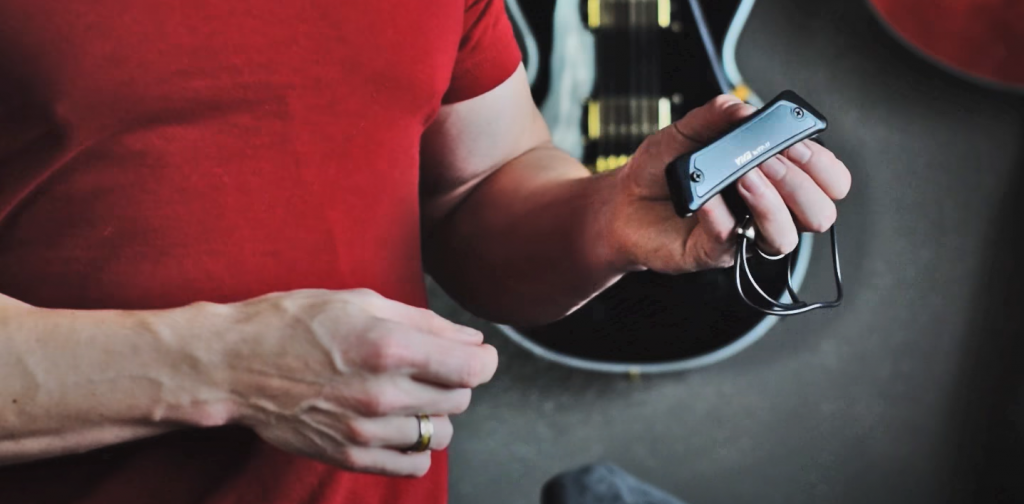
How to turn an acoustic guitar into an acoustic-electric guitar?
If you want to turn your acoustic guitar into an acoustic-electric guitar, there are a few things you’ll need to do. First, you’ll need to install a piezo pickup system. This type of pickup is mounted under the saddle of the guitar, and it converts the vibrations of the strings into an electrical signal. You’ll also need to install an external preamp, which will amplify the signal from the piezo pickup.
Once you’ve installed the piezo pickup system and preamp, you’ll need to make some adjustments to your playing style. Because piezo pickups are very sensitive, they can pick up unwanted noise from your fingers or body. To avoid this, try using a light touch when playing chords or single notes. You may also need to experiment with your picking style to find a sound that you’re happy with.
Acoustic-Electric to Electric Guitar Tone
Now that we’ve gone over how to turn an acoustic guitar into an acoustic-electric guitar, let’s talk about electric guitar tone. When you convert your acoustic guitar to electric, you’ll be able to get a wider range of tones out of the instrument. This is because electric guitars have a larger variety of pickups and amplifier options.
If you’re looking for a vintage sound, installing single-coil pickups will give you that bright, twangy tone that’s perfect for country or rockabilly. If you want something with more bite, try installing humbucker pickups. Humbuckers are great for genres like metal and hard rock.
Of course, the type of amplifier you use will also have a big impact on your tone. If you’re looking for a clear sound, try using a Fender-style amplifier. For a more distorted sound, go with a Marshall-style amplifier. Experiment with different combinations of pickups and amps to find the perfect sound for your style of playing.
Use an Electric Guitar Amplifier
One common question we get is whether or not you can use an electric guitar amplifier with an acoustic-electric guitar. The answer is yes! However, there are a few things to keep in mind. First, you’ll need to make sure that the amplifier you’re using has enough watts to power your acoustic-electric guitar. Second, you’ll need to set the volume on your amplifier low enough so that it doesn’t damage your hearing.
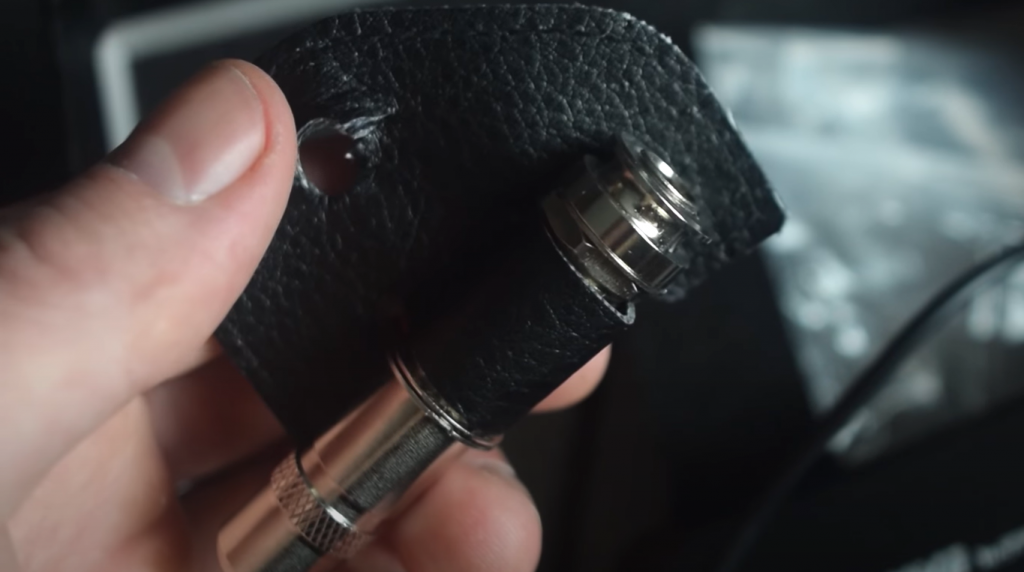
If you’re not sure how many watts your amplifier should have, a good rule of thumb is to choose an amplifier that’s twice as powerful as the wattage rating on your acoustic-electric guitar. For example, if your guitar is rated for 50 watts, look for an amplifier that ‘s 100 watts or more.
When setting the volume on your amplifier, it’s important to start low and gradually increase the volume until you reach a comfortable level. If you turn the volume up too high, you risk damaging your hearing or blowing out your speakers. [2]
Adjust the EQ on the Amplifier
After you’ve connected your acoustic-electric guitar to an amplifier, you’ll need to adjust the EQ settings.
For example, if you want a brighter sound, you can boost the treble frequencies. If you want a warmer sound, you can boost the middle frequencies.Experiment with different EQ settings until you find a sound that you like. And don’t be afraid to ask for help from a salesperson or another musician. They may have some great suggestions for getting the perfect tone out of your acoustic-electric guitar. [4]
Add Some Delay, Reverb and Compression
Delay, reverb and compression are all effects that can be added to your sound using an amplifier or a pedal. Delay is an effect that repeats your signal at regular intervals. Reverb creates a “washing” sound that makes it seem like you’re playing in a large room or hall. Compression evens out the volume of your signal, which can help smooth out your playing.
Adding these effects can give your sound more depth and dimension. Experiment with different settings to find the perfect combination for your style of playing. And again, don’t hesitate to ask a consultant at your local music store for advice. They may have some great suggestions for getting the most out of these effects.
Crunch, Distortion and Fuzz Sounds Will Suffer
If you’re looking for a clean sound, an acoustic-electric guitar is a great choice. However, if you’re looking for crunchy, distorted or fuzz sounds, you may be disappointed. These sounds are harder to achieve with an acoustic-electric guitar because they rely on the natural distortion that comes from overdriving an amplifier.
Of course, there are always exceptions to the rule. If you’re willing to experiment with different types of pickups and amps, you may be able to get the sound you’re looking for. But if you’re set on getting a crunchy, distorted sound out of your acoustic-electric guitar, you may be better off buying an electric guitar instead.
Put a Piece of Paper Under the Fretboard
If you’re having trouble getting a good sound out of your acoustic-electric guitar, try putting a piece of paper under the fretboard. This will help to brighten up the sound of your guitar and make it easier to hear each note. Just be sure not to put the paper too far under the fretboard, or you may accidentally mute some of the strings.
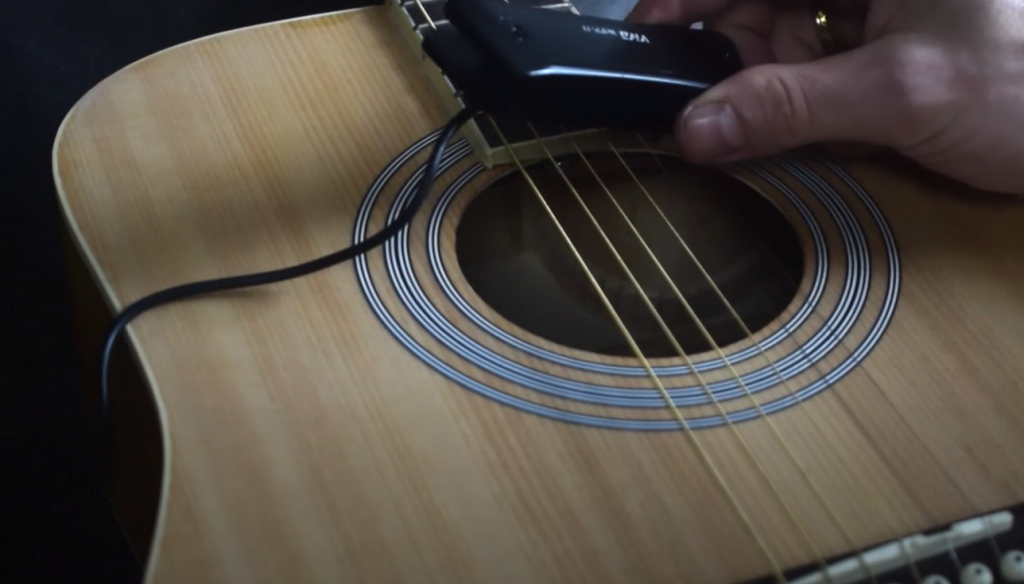
Experiment with different types of guitars and amps until you find the perfect combination for your style of playing.
Sound-Hole Cover to Limit Feedback
If you’re playing an acoustic-electric guitar at a high volume, you may find that the sound of the amplified strings is causing feedback. To help reduce feedback, you can place a sound-hole cover over the hole in the body of your guitar. This will help to muffle some of the amplified sound and prevent it from causing feedback.
You can also try pointing the neck of your guitar away from the amplifier or placing your hand close to the strings while you’re playing. This will help to absorb some of the amplified sound and reduce feedback.
Finally, if all else fails, you can try moving the position of your microphone. Feedback usually occurs when the microphone is too close to the amplifier or speaker. By moving the microphone away from the amplifier, you may be able to reduce or eliminate feedback altogether.
Feedback can be a frustrating problem, but with a little patience and experimentation, you should be able to find a solution that works for you.
Noise-Gate Pedals
If you’re having trouble with feedback or unwanted noise, you may want to try using a noise-gate pedal. A noise-gate pedal is a small pedal that you can place between your guitar and amplifier. The pedal will “open” when it detects a signal from your guitar and allow the sound to pass through. When there’s no signal, the pedal will “close” and block any unwanted noise from coming through.
Noise-gate pedals can be a great way to reduce feedback and unwanted noise. But they can also be tricky to use. If the pedal is set too low, it may not be able to block all of the unwanted noise. And if it’s set too high, it may cut off your sound completely when you don’t want it to.
Change the strings
If you’re not happy with the sound of your acoustic-electric, one of the first things you should do is change the strings. Old strings can cause sorts of problems, including a dull or muted sound. They can also make it harder to tune your guitar and stay in tune while you’re playing.
Don’t be afraid to experiment with different types of strings. Different materials, gauges and constructions can all have an effect on the sound of your guitar. If you’re not sure what type of strings to buy, just consult a musician or someone who understands guitars.
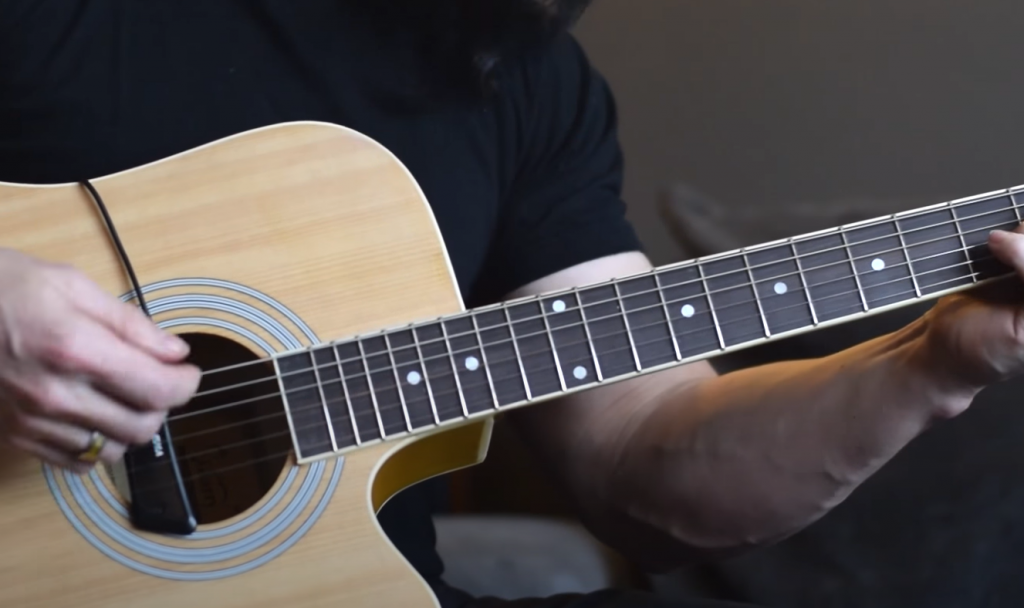
With a little bit of time and effort, you should be able to find the perfect set of strings for your acoustic-electric guitar.
A qualified guitar technician can help you adjust the action, intonation and other factors that can affect the sound of your guitar.FAQ
Can you use an acoustic guitar as an electric guitar?
The short answer is “no.” Acoustic guitars are designed to be played unamplified, while electric guitars are designed to be played through an amplifier.
However, there are a few ways that you can get a distorted sound out of an acoustic guitar. One way is to use a distortion pedal. Another way is to overdrive the preamp on your acoustic-electric guitar. But these methods will never give you the same sound as an electric guitar.
If you’re looking for a distorted sound, you’re better off buying an electric guitar. Or, if you’re set on using an acoustic guitar, try using a different type of pickup or amplifier. With a little experimentation, you may be able to get the sound you’re looking for.
Can I plug an acoustic guitar into an electric amp?
Yes, you can plug an acoustic guitar into an electric amplifier. However, you won’t be able to get a very good sound out of it. The amplified sound will be thin and tinny, and it probably won’t be very loud.
If you’re looking for a better sound, you’re better off buying an electric guitar or using a different type of pickup on your acoustic guitar. With a little experimentation, you may be able to get the sound you’re looking for. [3]
Why is electric guitar easier than acoustic?
There are a few reasons why electric guitar is generally considered to be easier than acoustic guitar. One reason is that electric guitars have lighter strings. This makes them easier to press down and less likely to slip out of tune.
Another reason is that electric guitars are typically played through an amplifier. This gives you more control over the sound of your instrument, and it can make it easier to get a good sound.
Finally, electric guitars tend to have shorter necks than acoustic guitars. This makes them easier to reach around and play chords. For these reasons, the electric guitar is generally considered to be an easier instrument for beginner guitarists. However, this doesn’t mean that acoustic guitar is impossible to learn – with a little practice, anyone can learn to play this versatile instrument.
Do acoustic songs sound good on electric?
It depends. Some acoustic songs sound great when played on electric guitar, while others may not sound as good. It really depends on the song and the style of music.
If you’re not sure whether an acoustic song will sound good on electric, try it out and see how it sounds. If you don’t like the way it sounds, you can always go back to playing it on acoustic guitar. With a little experimentation, you may be surprised at how well some acoustic songs work on electric guitar.
Useful Video: Electrify Your Acoustic for Less Than $20! – Demo / Review
Conclusion
Converting an acoustic guitar to electric is a great way to get started in the world of electric guitars. It’s also a great way to breathe new life into an old acoustic guitar that you may not be using anymore. In this article, we’ve walked you through the process of converting an acoustic guitar to electric. We hope you found it helpful. If you did, please share with your friends and followers! What was your experience converting your acoustic guitar? Do you have any tips or advice for others who want to try it? Let us know in the comments below.
References:
- https://tonetopics.com/acoustic-vs-electro-acoustic-guitar/
- https://www.theguitarhead.com/blogs/guitar-tips/guitar-amplifier-102-using-your-first-amp
- https://sixstringacoustic.com/can-i-use-an-acoustic-guitar-with-an-electric-guitar-amp
- https://www.digitaltrends.com/home-theater/eq-explainer/

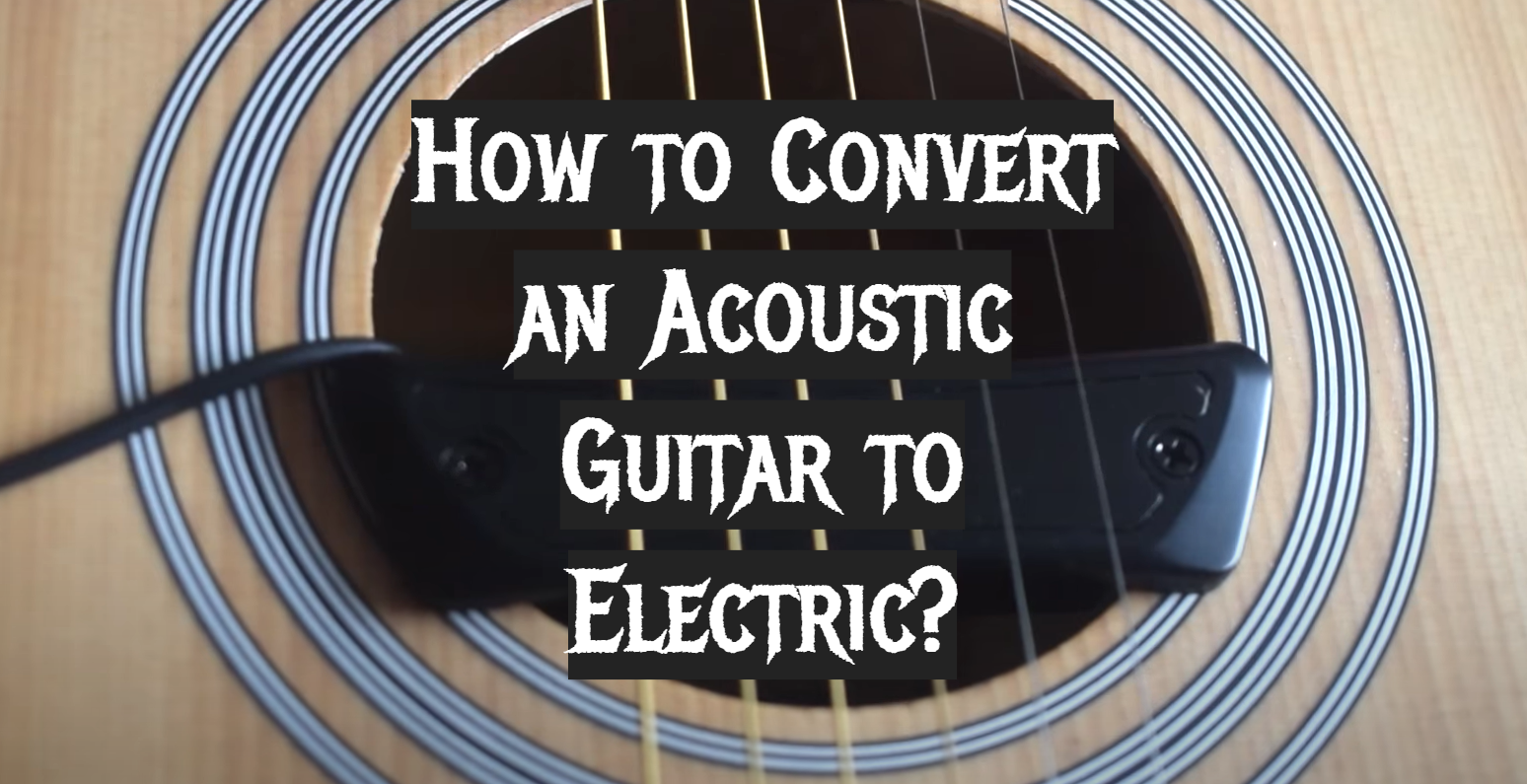




Leave a Reply